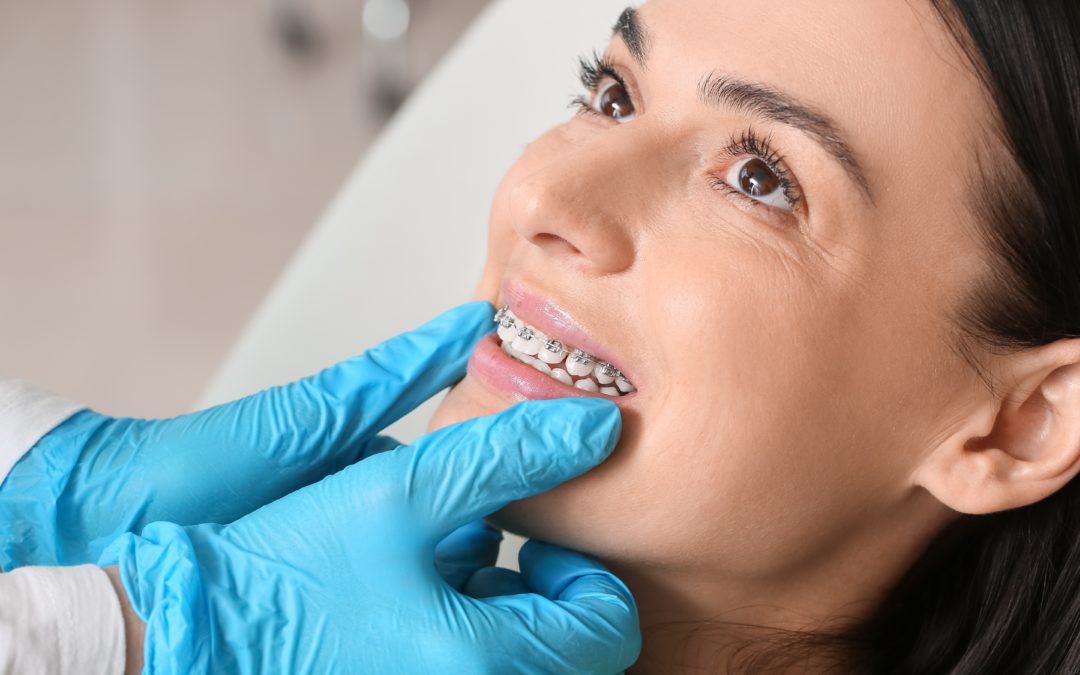What Is Good Bite Alignment?
While having straight teeth is desired, it doesn’t equate to a sound bite! Bite alignment is the way your upper and lower teeth fit together. According to Dr. Christine Frank, DDS, good bite alignment is defined as when your “upper teeth fit slightly over your lower teeth, and the points of your molars fit the grooves of the opposite molars.” This article discusses how to inspect your bite, different types of malocclusions, and ways to improve your smile!
With good bite alignment, you have better overall oral health. Chewing food is more manageable, you don’t have persistent jaw pain, and your smile is straighter! If you have questions about good bite alignment, speak with the Asprakis & Danti Dentistry team to learn more!
How to Determine If You Have a Misaligned Bite
Explore your alignment with a few simple steps. Stand in front of a mirror and close your teeth together. It may look a bit silly, but view your teeth from the front and look for the edges of your upper front teeth and how parallel they are to your upper lip; one-quarter of your bottom teeth should be hidden by your top teeth when your mouth is closed — another way to inspect your bite is from the bottom view.
With a handheld mirror, look at your upper teeth from below and search for malocclusions, another way of saying your teeth aren’t correctly aligned. This includes crowding and spacing. Lastly, a side view is the most difficult view to obtain on your own but one of the most helpful in determining if you have proper bite alignment.
Perform the Clench Test
The best way to determine if you have a misaligned bite is to perform a clench test. A clench test consists of biting down firmly and gently grinding your teeth front to back, side to side, and circular motions. If there is pain or discomfort during this test, speak with your dentist today and see what solutions are available.
If you are experiencing any of these symptoms, you may struggle with a misaligned bite and should reach out to a dental professional. Symptoms can be mild or severe depending on the case, including:
- A change in facial appearance
- Pain/discomfort when biting or chewing
- Speech difficulties
The Three Types of Malocclusions
Malocclusion is a dentistry term that describes your teeth not being correctly aligned. There are three types of malocclusions dentists look for when inspecting your bite. There are many reasons for malocclusions to occur, including, but not limited to:
- Congenital disabilities, such as cleft palate
- Difference in the size of your teeth, upper jaw, and lower jaw
- Lost, extra, or impacted teeth
- Childhood habits (thumb sucking, extended pacifier use, tongue thrusting)
Class One: Overcrowding or Spacing
Class 1 malocclusions are considered among the most common. They occur when there is overcrowding or spacing between the teeth; however, the jaw position doesn’t hinder the bite.
Class Two: Overbite
In this class, jaw positioning plays an important role. Class Two malocclusions are commonly known as an overbite and occur when the upper teeth and jaw overlap the bottom teeth. This can happen from a difference in the size of the teeth and jaws.
Class Three: Underbite
Lastly, a class three malocclusion is considered an underbite. This occurs when the lower jaw is much larger than the upper jaw. This causes the bottom teeth to protrude further out than the upper teeth and present more clearly than the upper teeth.
Benefits of An Aligned Bite
There are endless cosmetic and health benefits to an aligned bite. Severe malocclusion can cause speech issues, difficulty breathing, facial changes, and more. A properly aligned bite allows you to clean your teeth more effectively, gives you confidence, prevents tooth decay, gingivitis, facial difference, and so much more!
How Can We Treat It?
Thankfully, there are many solutions to achieving the bite that you deserve. Three standard solutions are traditional braces, Invisalign, and retainers and mouthguards.
Traditional Braces
Traditional braces are typically the first line of defense against a misaligned bite. This method of straightening has many pros and cons. Braces are affordable, efficient, and more comfortable than other means of straightening teeth. However, they are the most visible form of treatment, restrict you from eating certain foods, and can be challenging to maintain.
Invisalign
Invisalign aligners are the next course of treatment to achieve an aligned bite. They are clear removable retainers that have grown in popularity over the last two decades. One of the most noticeable differences between clear aligners and traditional braces is that they are barely noticeable! With Invisalign, taking care of your oral health is more manageable, there are no dietary restrictions, and you can straighten your teeth discreetly. But, if you aren’t wearing them consistently, your teeth will not shift effectively. Also, some tooth and bite problems may be more challenging to correct with Invisalign than with the traditional route.
Aren’t sure if Invisalign is right for you? Explore Asprakis & Danti Dentistry’s blog and learn more!
Retainers
Though you don’t witness it occurring, your teeth constantly shift until old age. One of the best ways to prevent movement is with a night mouth guard or retainers. Retainers stabilize your bite, avert treatment reversal, and protect your teeth against grinding.
Ask a Dental Professional
Achieving an aligned bite is ideal for both cosmetic and health reasons! A straighter smile, less jaw pain, and ease in taking care of your teeth are just some of the benefits of having a well-aligned bite. If you struggle to determine if you are satisfied with your bite, don’t hesitate to ask a dental professional about your oral health and alignment. Contact Asprakis & Danti Dentistry to schedule an appointment today!




